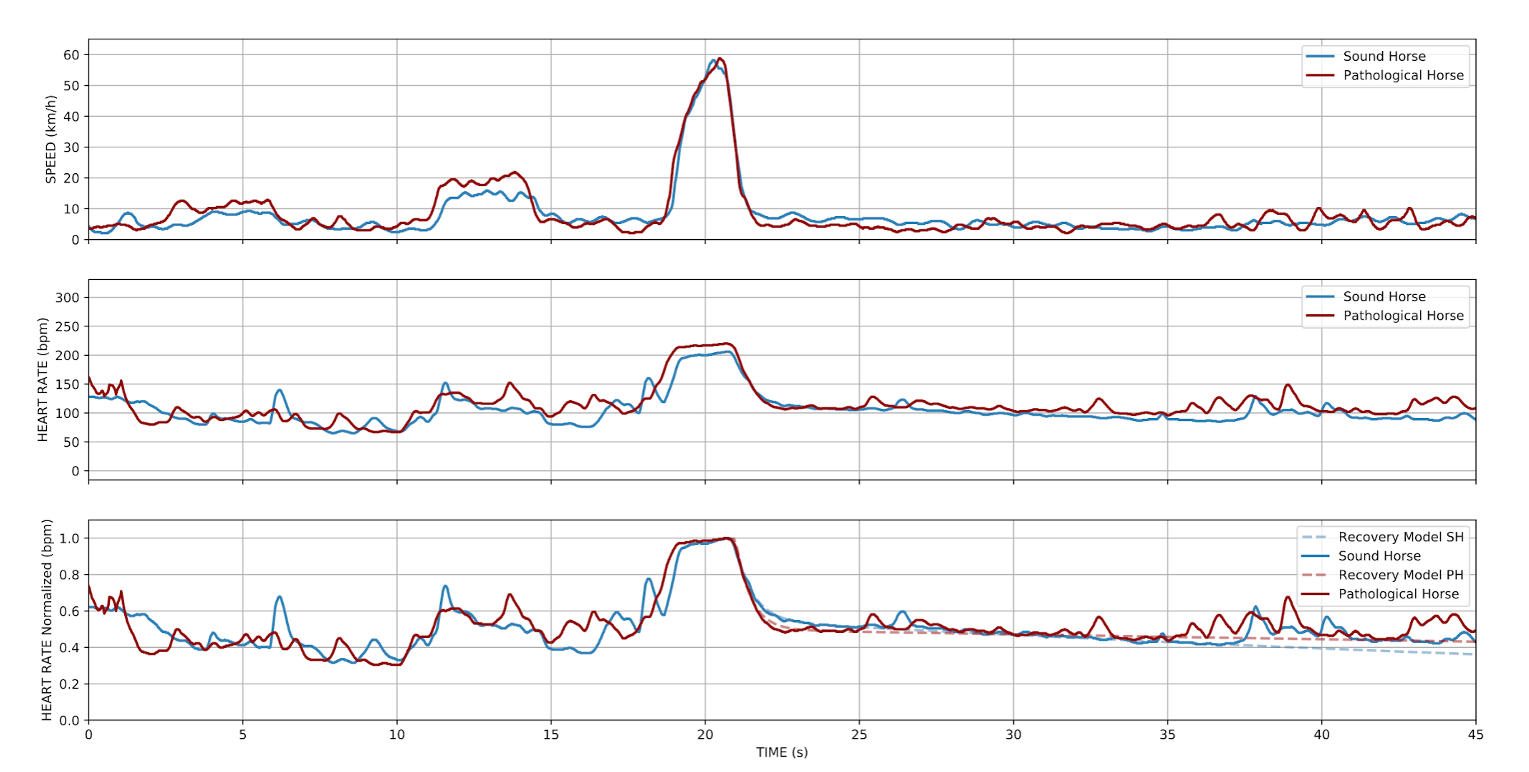Providing veterinarians with a real diagnostic challenge, performance loss in the racehorse can be difficult to investigate if the horse’s environment does not benefit from reliable technologies to collect historical data. Indeed, it is difficult to determine the cause of underperformance without almost daily monitoring. The symptoms to be identified are most often subclinical, i.e. they are difficult to detect at rest and during effort. The detection of under-performing horses within the racing industry is a real challenge for institutions. Carrying out prevention and detection work could in fact make it possible to avoid serious accidents on the training track or on D-day at the racecourse.
In order to detect the elements influencing the performance of the athletic horse, it is interesting to analyse his evolution during an exercise because things that do not occur at rest can appear.
In a series of two articles, we will analyse two cases of underperformance encountered by Dr Emmanuelle van Erck during her veterinary practice.
Inexplicable underperformance : investigate it with the ECG analysis
In this case we investigate the loss of performance of a 3 year old filly. The latter had promising performances during her 2 year old season and then injured her tendon. The trainer decided to stop her until next season. Once prepared for the return to training, the mare showed good abilities and her return was very satisfying. However, a nosebleed was detected after a small canter. The tracks were not particularly deep and there were no circumstances that could explain this bleeding.
In order to investigate the causes of this bleeding, the first step is to analyse the data from the mare when she presented her nose bleed.


It can be seen that the speed data are low: the effort does not go beyond 47km/h. The effort was of low intensity, but the heart rate is still very high, up to 217 bpm.
It is necessary to analyse the data from a more sustained training session in order to observe what is happening.

The data is normal: the heart rate changes at the same time as the speed.
The veterinarian decides to compare the horse’s data with those of the other horses in her lot, who have done similar work. The data do not show any recovery anomalies, the two curves that are superimposed do not show any significant difference. Her heart rate is a little high after the effort, but nothing catastrophic is observed.

1st conclusion: There is no explanation for the nosebleed in the data.
The veterinarian then decides to look at the ECG of this mare. The latter is pathological and shows 8 superventricular extrasystoles in 1 minute. This is far too frequent, especially in the warm-up and recovery phase.
2nd conclusion: The mare has relatively correct parameters. However, arrhythmias during effort are detected. They lead to the bleeding because the mare is in hyper tension at the pulmonary level each time she has an arrhythmia. During an arrhythmia, the heart skips a beat: whereas it should have beaten and expelled blood, the heart continues to fill up until the next beat, where it expels a large amount of blood, which puts too much pressure on the delicate blood vessels in the lungs and causes them to burst, resulting in bleeding.
It is therefore necessary to investigate bleeding during the effort. To do this, the veterinarian has performed a bronco-alveolar lavage. That is to say, he took cells from the lungs to analyse them under a microscope. The examination revealed regular bleeding in the lungs. Although she only had a nosebleed once, there was a bleeding in the lungs at each training session. The veterinarian must then understand the reason for this bleeding.
As the mare has no underlying heart problem (no heart murmur, no heart abnormalities and a normal heart morphology), the vet decides to examine the tendon. It is noticed that the tendon is abnormally scarred. This induces stress on the tendon which triggers pain manifested by extrasystoles visible on the ECG. When the mare is working under anti-inflammatory medication, she has less extrasystole, but this is not possible during the race. The pain explains the arrythmias that cause the bleeding.
It is necessary to follow the mare over time in order to evaluate her pain tolerance by means of ECGs. Without reducing the arrhythmias, it is not recommended to put her back into intense training. If she is engaged in racing, she risks having irreversible lesions in her tendon as well as more severe bleedings.
Technology at the service of the performance and well-being of the equine athlete
The role of new technologies today is to make the link between veterinarians and trainers. It is impossible for the veterinarian to be present every day at training. Thus, thanks to monitoring, the latter can carry out preventive work at a distance by following his patients’ indicators from his computer. If the trainer detects an alarming sign, he can talk to his veterinarian about it and show him the data history. These connected systems improve the monitoring of horses and the connection between the different members of their entourage.
Human athletes all benefit from these technologies to protect them on a daily basis while maximising their chances of performing. The equestrian world in turn has the opportunity to protect its athletes!
Are you interested in this case study of counter-performance? Here’s another one!
Key words: racehorse under-performance, loss of performance, ECG analysis, tech for good

